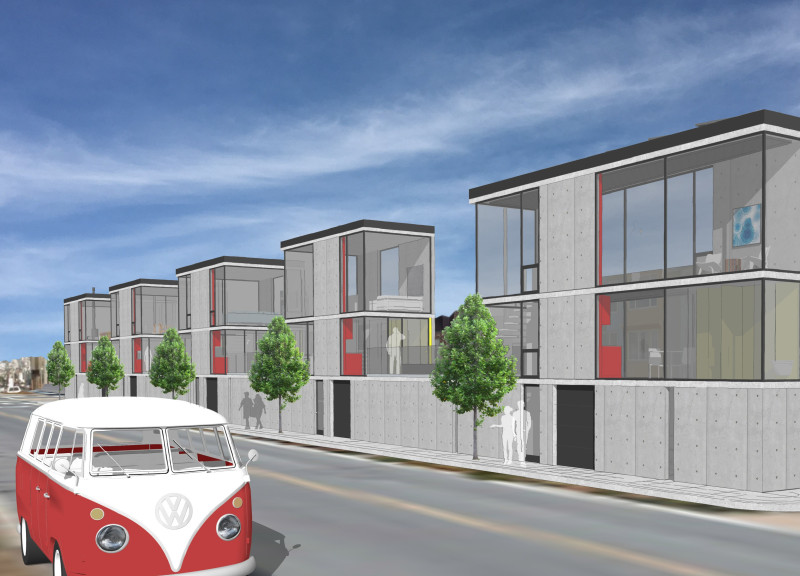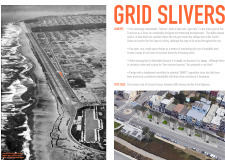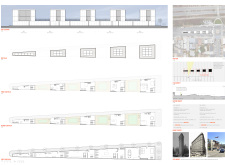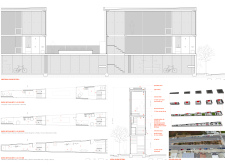5 key facts about this project
The design focuses on changing "gore lots," the leftover pieces of land within the urban grid of San Francisco, into microhousing options. Located in a busy metropolitan area, it aims to respond to the pressing need for new housing solutions. The central idea is to utilize these spaces, often seen as unbuildable, to create living areas that blend with the surroundings while promoting sustainable living practices.
Concept and Design Approach
Open and airy spaces characterize the design. This method makes the most of limited square footage. Five different housing units are planned, each ranging from 732 square feet to 2,177 square feet. The variety in unit sizes helps meet the needs of a diverse population. Smaller living spaces ensure affordability while still allowing for quality design, setting it apart from many traditional low-income housing models.
Community Sensitivity
Acknowledging potential pushback from residents regarding new developments, the design approach includes input from the community. Care is taken to consider the views of existing homes. Protecting ocean views plays a significant role in the design, helping to maintain positive relationships within the neighborhood. This focus on community integration ensures that the new housing fits well within the established context.
Innovative Features
The layout highlights well-planned elevations and floor designs that prioritize both function and natural light. Features like fold-down beds allow for flexible living arrangements. Additionally, the inclusion of systems for harvesting rainwater and using solar energy reflects a commitment to sustainability. These practical elements support a modern approach to urban living.
Each unit is planned with great attention to detail, maximizing space to improve livability. The thoughtful integration of innovative features makes the design a relevant example of how to tackle housing shortages in dense urban areas while focusing on community needs. The result is a practical solution to a complex issue, demonstrating a clear understanding of both environmental responsibility and social considerations.






















































